Clasp dentures on telescopic crowns
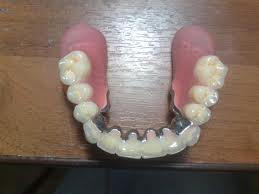
Today, arch prostheses on telescopic crowns, are the most reliable and comfortable among removable designs.
Dentures with telescopic fixation are installed on both abutment teeth and implants.
Even teeth with strong mobility can be used as a support, since the load on the tooth goes strictly along its axis.
The structures are held on the supporting teeth using telescopic (double) crowns.
It should be noted that this type of prosthetics in our country is used only in rare cases, due to the complexity of its manufacture.
A doctor and a dental technician are required to have high qualifications.
Nevertheless, in the USA and European countries, arch prosthetics on telescopic crowns is basic and quite common.
Making a clasp prosthesis on telescopic crowns is very laborious. For the high-quality production of such a design, the clinic requires special equipment.
Any slightest deviation in technology or the use of low-quality material can have a negative impact on the result.
Clasp prosthetics with a telescope are used with insufficient height of the crown of the tooth and with insufficiently pronounced shape of the teeth.
Structure
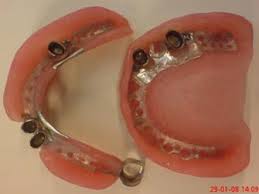
The telescopic clasp prosthesis consists of two parts: removable and non-removable.
Both parts of the structure are spyglass. Hence their name - telescopic clasp prostheses.
- The inner part of the structure was named - the patrician. It is attached to the tooth.
- The outer part of the prosthesis is the matrix. This is a removable part.
Removable part:
- Actually the basis.
- A metal cap that is mounted on the base of the prosthesis.
Fixed part - a cap made of metal. It is thoroughly attached to the abutment and looks like a metal cylinder. The main purpose of the fixed part of the structure is the fixation of the prosthesis.
Fixation

The removable part of the prosthesis is securely fixed on the abutment teeth covered with dental crowns. The abutment teeth when using the clasp prosthesis on telescopic crowns are not overloaded.
The strength of the fixation of the structure depends on the number of supporting teeth.
For a more reliable fixation and a long service life of the clasp structure, installation of at least six telescopes on the jaw is required.
Nevertheless, in order to fix the telescopic prostheses, the presence of two supporting teeth is sufficient.
For telescopic fixation of the structure, two types of crowns are used:
- Cylindrical.
- Conical.
Cone crowns are quite easy to separate, they cannot jam or warp.The disadvantage may be that when eating soft or viscous foods, they can easily separate.
The cylindrical type of crowns is used very rarely.
For better fixation of the prosthesis during its manufacture, additional elements are laid: a galvanic cap, magnetic alloys, sapphire balls, SAE friction pins.
Indications
- The absence of one or more teeth in the dentition.
- Treatment of periodontal diseases with simultaneous restoration of teeth.
- Remaining teeth prone to loss.
- The patient's desire to have real teeth with good fixation.
Benefits
- Possibility of use with a very small number of healthy teeth.
- Reliability of fixation.
- The ability to combine treatment with tooth restoration.
- Strengthening loose teeth.
- Ease of use, with food and when talking.
- Comfort.
- Compact design.
- Fairly easy to use and care.
- The prosthesis is easy to modify.
- High esthetic properties.
Installation

Installation of the clasp design on telescopic crowns consists of the steps:
- Jaw preparation includes dental and gum treatments, as well as the removal of dead teeth.
- Preparation of teeth for crowns and locks.
- Taking impressions from the upper and lower jaws. Making a gypsum model.
- Production of a temporary design.
- Fitting the prosthesis.
- Making a permanent design.
- Fixation of clasp prosthesis.
Contraindications
- Incorrect position of the abutment teeth.
- Increased tooth abrasion.
- Periodontal disease is pronounced.
- For diseases when tooth grinding is not recommended.
Care
- No need to remove the structure before bedtime.
- It is necessary to remove the prosthesis twice a day to conduct oral hygiene and to cleanse the structure of food debris and plaque.
- For the first time after installation, while the prosthesis is getting used to, the structure must be removed in front of the mirror and above something soft to prevent chips from accidentally dropping the prosthesis.
- After eating, rinse your mouth with water.
- Check the design functions by visiting your dentist regularly.
Video: “Telescopic crowns”
Life time
With proper care of the structure, passing professional examinations at least twice a year, the service life of the structure will be up to 10 years.
Price
Clasp dentures with telescopic fixation - quite an expensive type of removable structure. The cost depends on the number of supporting teeth, material for the manufacture of crowns. The more teeth, the higher the cost of the clasp construction.
| Type of prosthesis | Price |
| Clasp prosthesis with telescopic crowns | From 80,000 - 185,000 |
| Splint clasp prosthesis | 20000 |
| Clasp prosthesis on one jaw with clasps | 30000 |
| Clasp construction on one jaw with locks | 51000 |
Questions and answers
When choosing a clasp prosthesis, the convenience of using the prosthesis and its aesthetic qualities are of great importance. Choosing a fixing method removable prosthesis, it is necessary to take into account the presence of contraindications.
Frequently asked questions are answered by specialists.
- Question: I have almost no teeth left. What removable design is recommended in this case?
Answer: In the case of periodontal disease, the most optimal option for the prevention of loss and strengthening of preserved teeth would be a splint arch prosthesis with telescopic fixation.
- Question: There are very few teeth left. I want to have beautiful teeth with a secure fit. What type of prosthetics will be most preferable?
Answer: Clasp prosthesis on telescopic crowns is perfectly fixed and has a high aesthetics.
- Question: Do crowns have to be placed on the supporting teeth if the clasp construction is on telescopes?
Answer: Yes, in order to fix the prosthesis, it is necessary to put special supporting crowns, which are an integral part of the structure, on the supporting.
- Question: Is it possible to put a clasp prosthesis with telescopes if there are no teeth?
Answer: Yes.First, it will be necessary to install implants, and then make a removable clasp structure with telescopic fixation.
- Question: I am allergic to metal. Can I have a removable clasp prosthesis?
Answer: There is no allergy to the clasp telescopic design. All materials are hypoallergenic.
Before and after photos
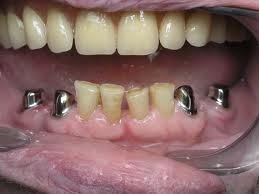 |
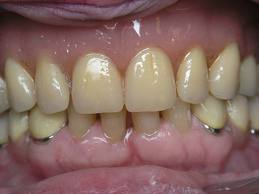 |
 |
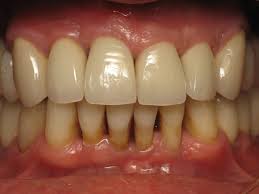 |
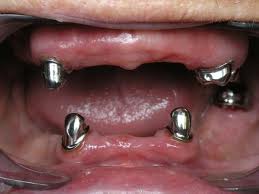 |
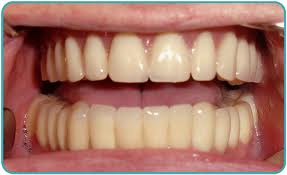 |